Introduction
- One in every five pregnancies in the world results in abortions.
- Rates of abortion differ from one area to another due to the differences in the existing laws that relate to abortion.
- UK is currently considering legalizing abortion.
- The main aim of the paper is to study the perceptions of nurses attending to abortion patients.
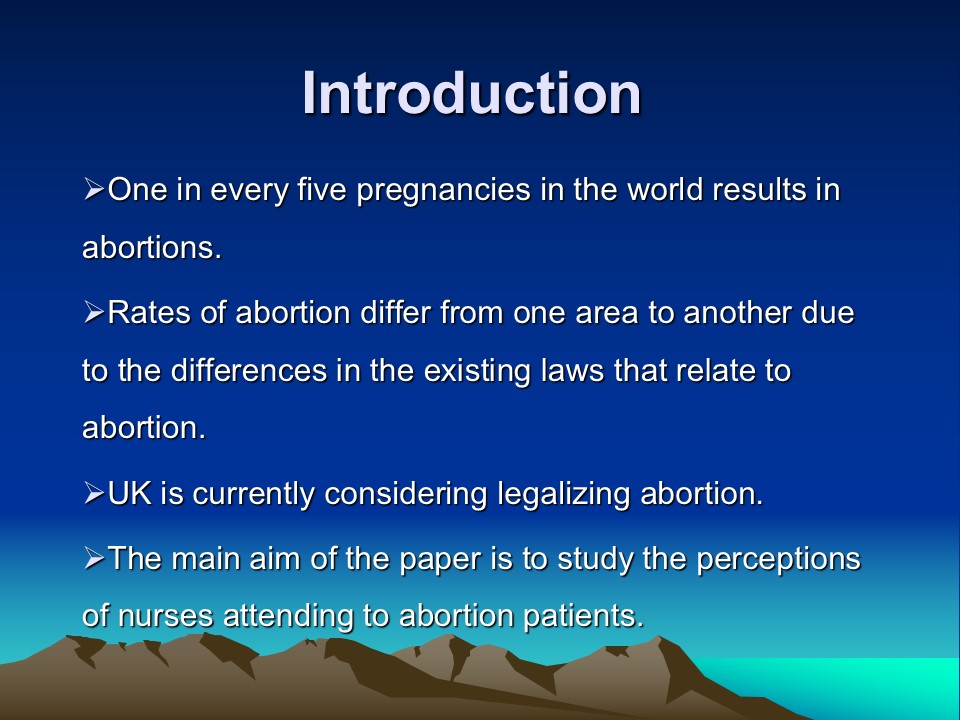
Literature review
- In 2003, approximately forty-two million women voluntarily aborted. This was out of the 205 million women around the world.
- About 50% of those who aborted did this through illegal and unsafe means.
- Unsafe abortions-mostly practiced in the developing countries-were classified as the major contribution to the death of many mothers.
- Ninety two % of the cases in the developed countries follow the legal procedure and therefore, are safe.
- Most of the developed countries permit abortion if it is meant to save the woman’s life. In 31 countries, however, abortion is conducted upon request (Huntington, 2002).
- Abortion is common in many countries but little is known about the attitudes and perceptions of the nurses giving this care.
- Abortion Act of UK provides for the legal period within which abortion could be requested and accepted. This should be within 24 weeks after conception.
- Campaigners argued against abortion stating that the fetus was an unborn baby and had every right to live.
- Pro-choice campaigners thought otherwise. They believed that the mother could choose abortion since the fetus did not have rights before birth (Griffith & Tengnah, 2007).
- Recent research suggests that midwives performing abortion (13 weeks gestation period) need to manage stress (Lipp, 2008).
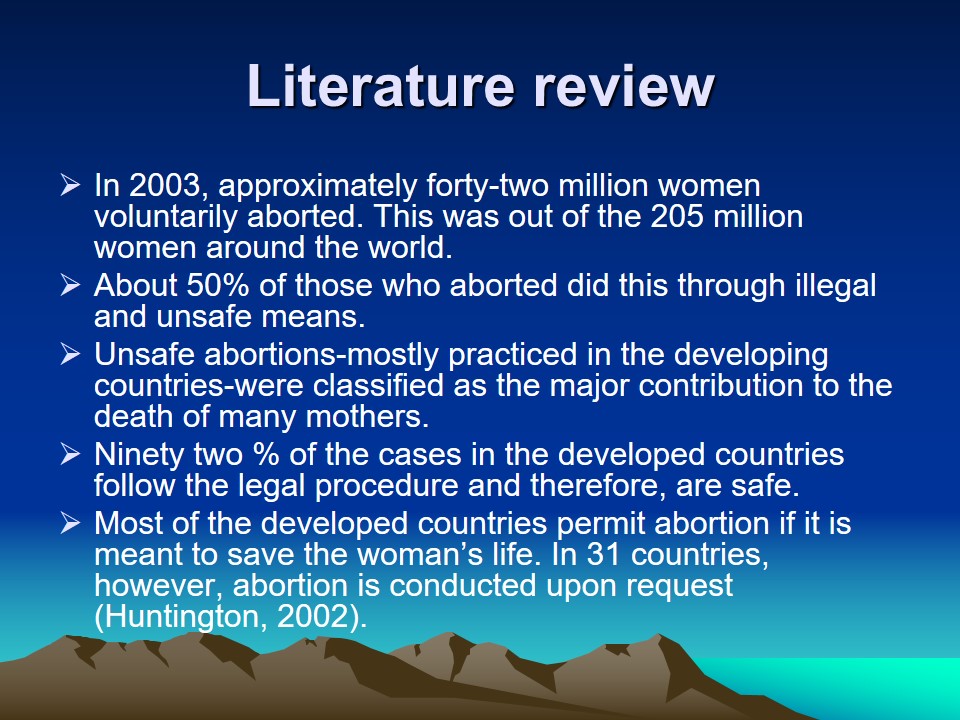
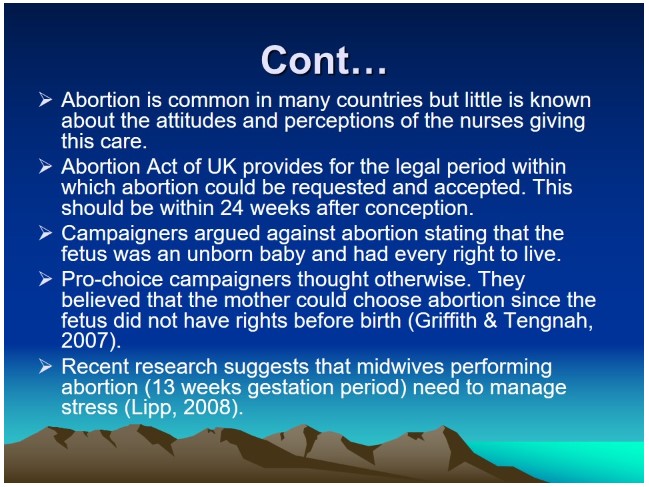
Methodology
- The study followed an exploratory qualitative design.
- Three abortion clinics in the United Kingdom were selected for the study.
- Participants had to go through surgical or induced abortions (or both).
- Interviews (lasting between 30-45 minutes) were conducted on the potential participants using the semi-structured technique.
- Nine nurses volunteered for the exercise.
- Attitudes towards abortion were assessed as the 24-week limit drew close.
- Eight participants were audio-recorded while the other preferred to hand-write.
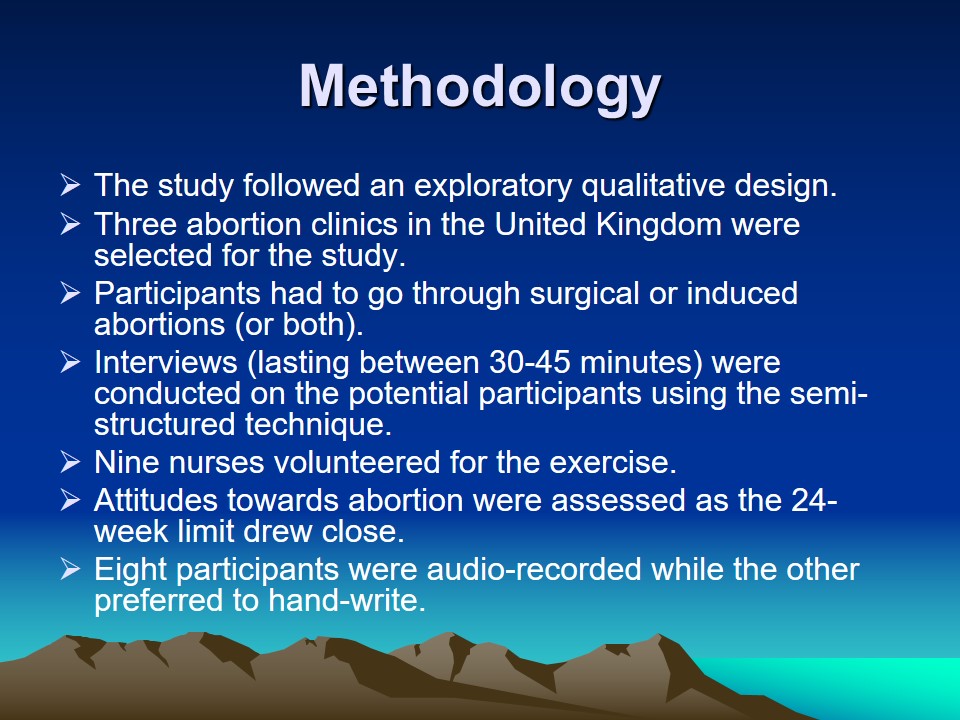
Conclusion
- The results took two directions: Nurses’ attitudes towards abortion and those coping with abortion.
- Their awareness to the social ills of abortion led some to believe that they were doing the wrong thing. They hesitated to disclose their profession as nurses when with peers.
- They felt that the patients had misconceptions about their attitudes toward the nurses since they felt like they would be judged for terminating the pregnancy.
- Participants displayed evidence of coping with abortion since they defended themselves and said that it was the decision of the client and not the nurse’s.
- The nurses, however, did not encourage or support late gestation abortion.
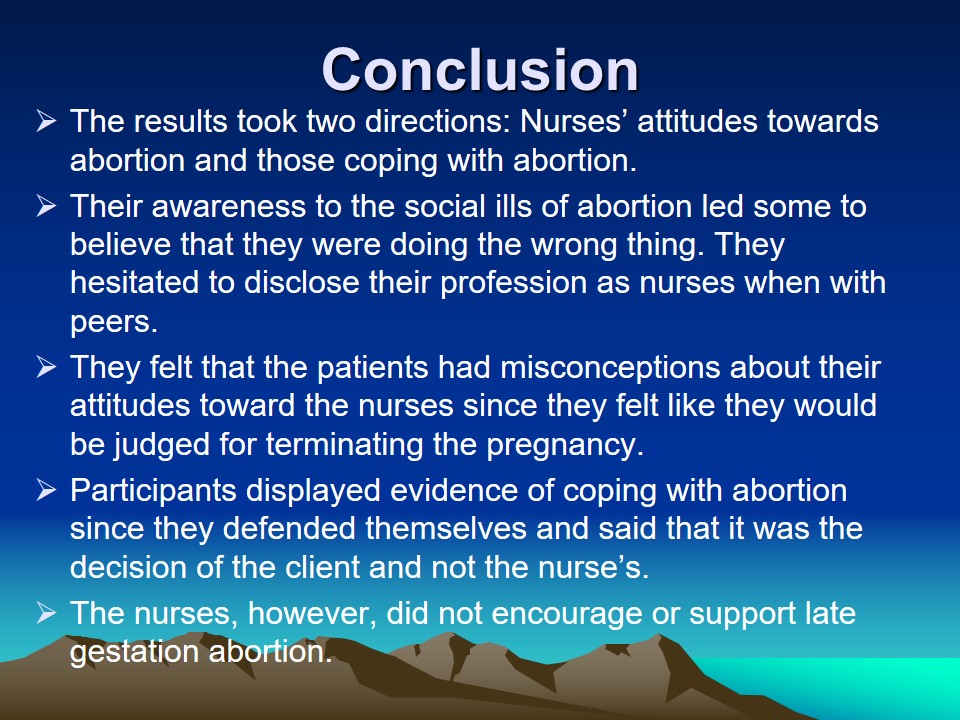
Implications
- The participants supported the idea that women should be the ones to decide whether to terminate a pregnancy or not.
- One way in which nurses avoided stress or coped with their profession was by using the term fetus rather than baby. This helped them cope emotionally (McQueen, 1997).
- They also said that the fact that they were providing their services did not mean they completely supported it.
- In some situations, the nurse could avoid confrontation from a client by leaving her to be attended to by another.
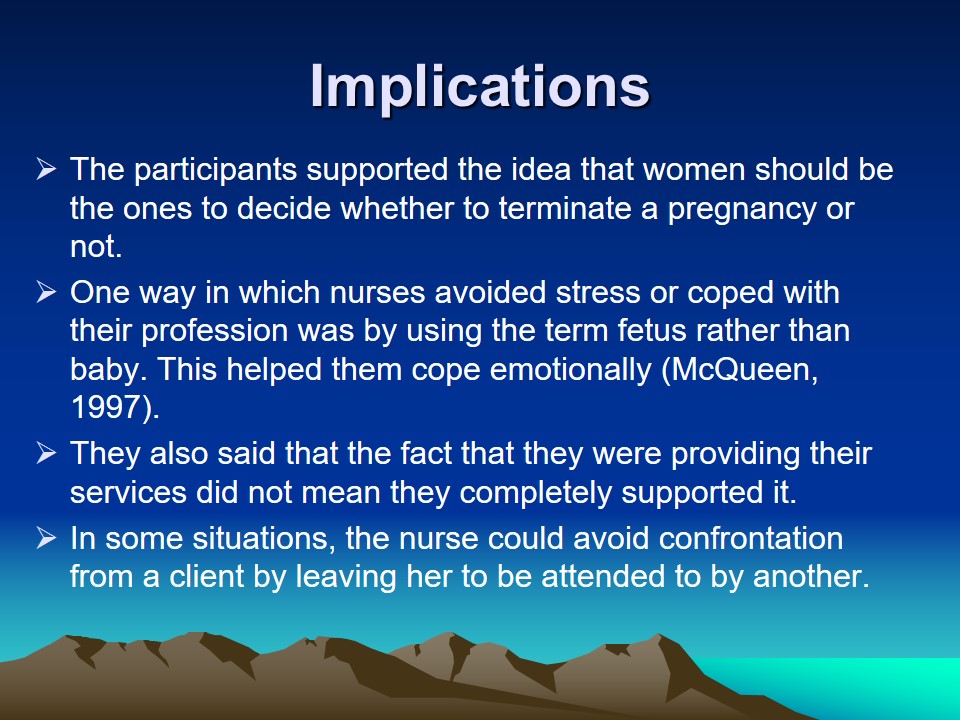
References
Griffith, R., & Tengnah, C. (2007). Termination of pregnancy: A case for a change in the law. British Journal of Community Nursing, 12(7), 317–318.
Huntington, A.D. (2002). Working with women experiencing mid-trimester termination of pregnancy: The integration of nursing and feminist knowledge in the gynecological setting. Journal of Clinical Nursing, 11, 273–279.
Lipp, A. (2008). Supporting the significant other in women undergoing abortion. British Journal of Nursing, 17(19), 1232–1236.